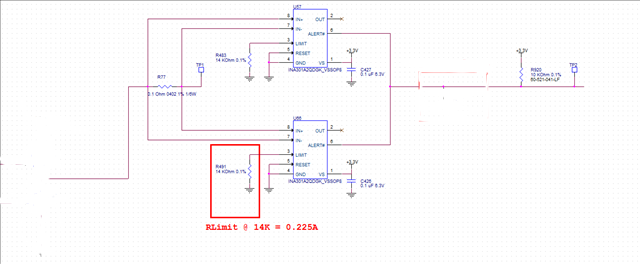Other Parts Discussed in Thread: INA228, INA229, INA190, INA239, INA200, INA186

The measured impedance of both comparator inputs is about 50K ohms. Since I didn’t find anything relevant concerning the input impedance
In the data sheet, I assumed it was in the order of Mohms. I don’t have any issues for current sensing, however the relatively low impedance on the transceiver line I’m driving (TP1)
Is affecting badly my software enabled PU resistor. It is actually acting as a voltage divider of almost 50% with my actual 27K ohms PU. I’m aware that I could drop the resistor value to a more “neglectible”
Value, however my power budget for this design won’t allow me to have too much power dissipated with those PU resistors.
I have been thinking of a workaround, like adding a series resistor on the inputs to raise the impedance , however I’m afraid it would affect the precision of the current sensing INA301.
My question goes as follow: Is there any IC with a known input impedance that would be much higher impedance while using the same topology as provided with the above screenshot?
If not, do you see any workaround that could possibly patch the issue I’m having according to the following specs :
Nominal voltage on transceiver line : 28V
Actual PU resistor : 27K ohms — power budget is fine but acts as a voltage divider with INA301 input impedances
“Patch” PU resistor : 3K ohms 1/3W 0603 — drives too much current for design
Trip current on INA inputs : 0.225 mA
Regards

